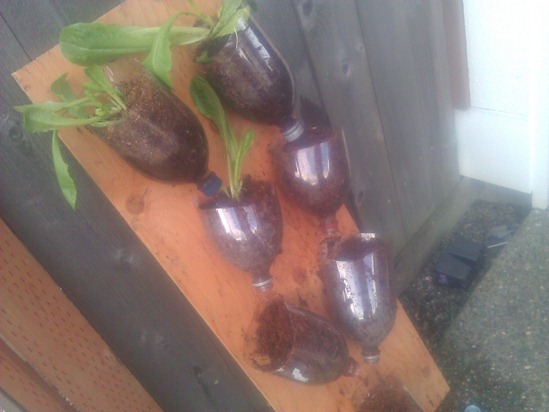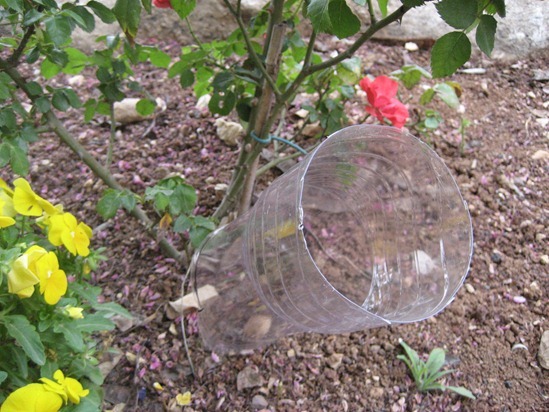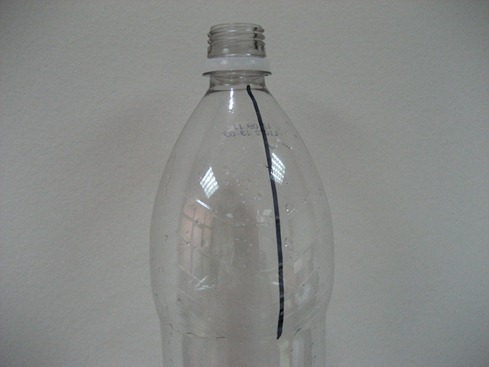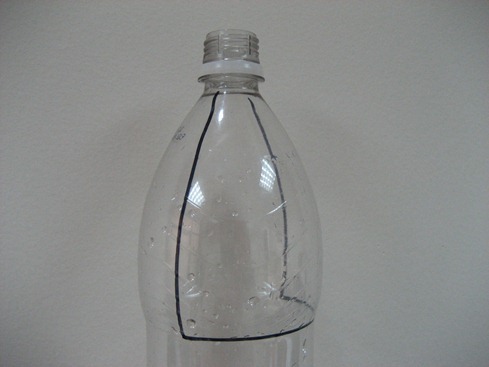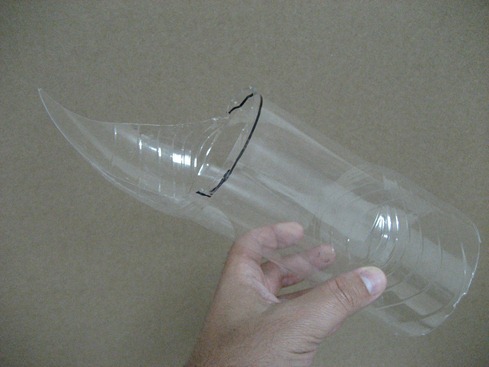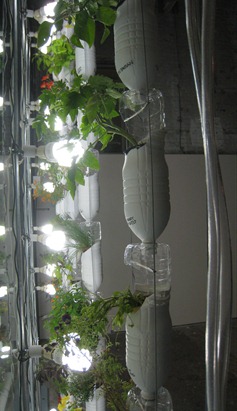Environmentally Friendly Tips for Your Lawn
10.9 years ago environment, recycle

Who doesn’t appreciate a nice green lawn? Caring for a lawn doesn’t have to be a nightmare. In fact, with a little creativity it can be fun—even if you live in a neighborhood with an overly strict and nosy homeowner’s association and makes seemingly unreasonable demands and is always looking over your shoulder. Here are some of the things to make the task of yard and lawn care easier for you and for the environment.
1. Hire a Professional
Seriously! The easiest way, though not the cheapest, to care for your yard and lawn is to hire someone else to take care of it for you. It’s easy enough to find a professional in your area by using sites like search sites like lawnservice.net or hitting up Craigslist. Professionals do this for a living, know all the tricks of the trade, and bring professional grade equipment that can do the job in half the time.
2. Use a push mower
Mowers that use engines require gasoline. This is terrible for the environment, your lungs, and your wallet. They are also louder than push mowers and while it might be fun to irritate an annoying neighbor, that whole turnabout is fair play thing should keep you in check. Plus, do you really want to spend money to bother your neighbor?
Bonus: engineless/push mowers are more difficult to move, which means you get a better workout when you mow the lawn (which could mean that you no longer need that expensive gym membership!)
3. Compost is Your Friend
Start a compost pile at a far corner of your yard (they’re smelly and aren’t fun when kept under windows). Compost piles are great because they reduce the amount of land-fill bound waste produced by your home. You can compost almost all organic foodstuffs (not meat—compost piles are Vegan) as well as grass clippings and other yard debris. Compost is better for your lawn and plants than fertilizer, it saves you money and it is much better on the environment.
4. Use Rain and Gray Water
Set up a rain collection barrel near your house (they’re easy to set up and use). Stop up your tub and sink when you bathe and wash dishes. Run this water through a simple filter and then use it and the rainwater you’ve collected to water your lawn and your plants. This reduces your water and electric bill by quite a lot. It’s also better for your plants. Just don’t use the gray water or roof runoff to water vegetable or fruit producing plants, they may contain toxins that you don’t want in your food.
5. Rake, Don’t Blow
Leaf blowers are loud, they are obnoxious and they require gasoline to run. They put lots of carbon into the air, which is terrible for the environment. Also, blowing the leaves from your lawn into the street (or someone else’s yard) doesn’t actually solve the problem. It just creates a bigger one for someone else to take care of.
Raking your yard helps you gather up leaves and debris so that your yard looks great. It provides you with a pretty decent workout and can be a fun way to spend an afternoon if you get the whole family involved. Leaves and organic debris are compostable so you can simply add them to your compost pile when you’re done gathering them up (and jumping in them).
These are just five ways that you can care for your yard and be as eco-friendly as possible. They should even pass a strict Homeowner’s Association’s standards (especially if you keep your compost pile covered so the smell doesn’t spread or attract critters)!
Make the most of May with some quick recycling projects
11 years ago cheap, guest post, recycle
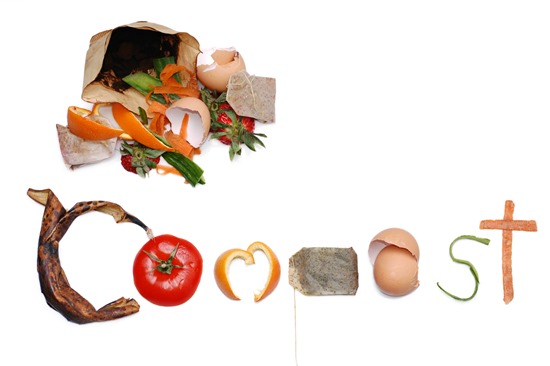
May is a great time to start enjoying the warmer weather and longer days by getting out in the garden. By taking the time to smell the roses and stroll around the allotment plot or garden you can help to combat stress levels and restore the Zen to your busy life. Discovering the plant life and wildlife using your senses will bring you closer nature. While you appreciate these little natural miracles why not give a thought to how we can help the environment at home.
While you are (hopefully) having fun in the sun you could have a go at a few recycling and repurposing activities. Here are a few tips that can help you turn your rubbish into something beautiful or functional.
1. Turn rubbish into a planter. A chipped cup and saucer, a teapot with a broken lid, a lonely wellington boot, all can be filled with compost and turned from something unloved into something beautiful. It’s true that flowers can work wonders to cheer up a dull space, all you have to do is to drill some holes in the bottom of the receptacle, fill it with compost and plant flowers or seeds. Summer bedding plants are in available at garden centers right now and can be used to add an instant impact.
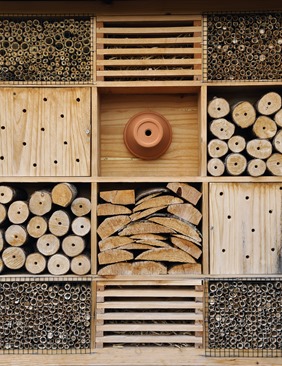
2. Build a bug hotel. These can be made from all sorts of weather durable scraps of building material and garden material. The easiest bug hotel can be made from broken garden canes which are too small for anything else. All you have to do is chop them up into similar lengths and tie them together with twine and leave it in a quiet corner of the garden. Bugs, insects and even bees will crawl in to this safe place during bad weather and frosts.
3. Make use of kitchen scraps. Slugs are a gardener’s public enemy number 1, use broken eggshells or anything prickly (holly leaves work well too) scattered around your most precious plants to deter the slimy horrible critters from munching their way through the irresistible fresh new shoots. Other kitchen scraps such a vegetable peelings can be added to the compost where they will provide valuable nutrients and help improve the structure of the soil.
4. Use finished water bottles. Empty water bottles are one of the world’s biggest recycling problems but there are so many uses for them around the garden. In May when frosts can still happen, water bottles filled with water can be used to protect courgette plants. By filling up the bottle with collected rain water and then placing the bottle (or 2 of them) next to your courgette plants you can provide extra warmth during the last frosts. The water in the bottle will warm up during the day in the sun and then cool down slower than the air at night, thus keeping your plants toasty should a frost happen. Used water bottles can also be made into slow release drip feeders which will make efficient use of water as none runs away from its intended destination.
With so many ways to recycle you need never look at your rubbish in the same way again!
This article is a guest post from Dan Whiteside, Dan blogs about DIY and gardening topics at DIY Newbie, where he discusses a variety of issues including plumbing repairs and building projects.
vertical gardening recycling two liter bottles
12.1 years ago cheap, planter, recycle, upside down planter, vertical gardening
I am always looking for ways to enable myself to grow more in my small suburban yard. One technique to do this is using the maximum vertical space to your advantage. Whether this is growing your tomatoes and cucumbers up a trellis or growing some tomatoes from hanging upside down planters the more you successfully make use of this space the higher yields you can achieve.
One part of my yard has a great location which southern facing but do to concrete supported fence posts I can not grow anything there until now. With my homemade vertical planter I can grow a variety of small root vegetables such as lettuce, herbs, cherry tomatoes, flowers, etc.
Step #1: Cut to size. Depending on the soil needs of the plants you are growing cut off the tops using a utility knife or a good pair of scissors/kitchen shears. Cut just a bit lower on one side of the “planter” to provide a little more room for the next step and give the plant a natural way to hang over the side of the planter.
Step #2: Drill holes in top two caps. Not much else to describe here…this is done to restrict the flow of water to the planters below this one and prevent erosion of dirt out of the planters due to too high of water flow.
Step #3: Attach bottles. Pick any scrap piece of plywood you have around and attach the bottles with a couple of small screws. You can be as creative as you want on this one. A couple things to keep in mind, you want the water to flow between the planters to save yourself some time when watering these (you only have to water the top one) You also want to thing about how the plants may mature and couple block the sun from some of the plants below it, so staggering directions can help with this.
Step #4: Fill with dirt. Add some good potting soil (I went with my favorite coconut coil) and water from top to ensure water drips as expected. If you aim is off you can always add another screw (or adjust) to get everything lined up.
Below is a video of this vertical planter in action.
Irrigating with Plastic Bottles
13 years ago cheap, guest post, recycle, water
When standing with the hose in hand watering the garden this growing season here’s something to contemplate:
The point of watering is feeding roots but in most cases excess water is wasted falling between and around plants. A watering can is better suited for the task but still lacks precision.
One way to ensure water reaches its target is through a delivery mechanism that takes into consideration low water usage. True, in the realm of eco-friendly gardening there are many types of specialized irrigations systems that direct water but most aren’t feasible devices for the general homeowner.
However, one that could be made at home with little cost involves reusing plastic bottles from water, soda, and other drinks. Any size will work but the 1.5 liter or 1 liter is the easiest to experiment with. All that’s needed besides the bottles are two to three foot thin but sturdy sticks that can fit through the spouts.
Now, there are different ways of setting up the watering system but the basic idea remains the same and can be adapted to fit any situation.
For example, a simple approach may go something like this:
Simple Method
1. Cut off the bottom of the bottle about an inch up.
2. Making sure not to disturb the plant itself place and the bottle near the base of the plant with the spout down almost completely vertical. Then push the stick through the bottle into the ground so it’s holding the bottle upward. If it leans a bit that’s ok.
3. Pour water into the top (the cut off bottom) and see if it reaches the base of the plant. Adjust if necessary.
Advanced Method
1. From the spout use a marker to draw two lines 5 or 6 inches down each side (at a 180 degree angle) essentially dividing the bottle if you continued all the way around.
2. Connect the ends of the lines by circling around the bottle’s width creating two halves.
3. Carefully cut out one of the halves and remove the spout so you end up with a scoop-like shape.
4. If necessary spend some time trimming it so it has a pointy or shovel-like tip capable of sliding into the ground and resting in place.
5. Cut off the end (the bottom) of the bottle about an inch up.
6. Place the scoop side in the ground.
7. Test with some water and adjust the placement if necessary.
Either way you choose regulate water usage to less than a cup for each plant when possible and in the end this contraption will save on next month’s water bill.
Finally remember the bottles along with any scraps should be recycled when no longer in use or at the end of the season. They’ll probably be worn from the elements so don’t hesitate to toss them out and use new ones the following year.
Jakob Barry writes for Networx.com, a growing community of homeowners and contractors sharing and monitoring home improvement projects together. He covers various home improvement topics including lawn irrigations tips and grounds maintenance
Money-Saving Tips for the Organic Gardener
13.8 years ago cheap, organic, recycle
Organic gardening is a hobby many find relaxing and rewarding, and you can take a bite out of your produce bills by eating the delicious fruits and vegetables your efforts yield. However, between the many different planting and gardening tools and supplies you’ll need, the costs can really add up, and anything you can do to save a buck or two here and there will help. Fortunately, there are all kinds of simple money-saving gardening tips for the organic gardener looking to keep expenses under control.
Save Money on Seeds and Planting
If you’re looking for plant trays, hold off before buying brand-new ones. Many garden centers and nurseries will be more than happy to give you their used ones, so be sure to ask if you’re heading out there to pick up seeds or supplies. You can use them as starting pots; they work especially well for kicking off a hardy plant’s growth cycle.
Reusing household items for your gardening whenever possible is one of the best ways to save a few bucks. For example, rather than purchasing seed storage containers, you can use empty film canisters, which you can label to ensure you know which seeds are which. Separating individually started seeds in yogurt containers, plastic bakery trays or ice cube trays is another strategy you can use.
More Money-Saving Organic Gardening Tips
If you’re new to the world of organic gardening, it’s a good idea to get secondhand tools and supplies; you may also find it worth your while to choose plants that are easy to grow and care for so you’re not wasting time and money on finicky, fragile and difficult plants. Mint, lemon balm, thyme, sage and rosemary are excellent beginner herbs. Garlic, radishes, kale and potatoes are recommended vegetable crops for new organic gardeners.
You can cut down on your water usage by harvesting rainwater and creating tiny irrigation moats around your garden that allow you to store water and direct it to where it’s needed. Plants thrive when they’re given rainwater to drink; it’s naturally softened, free of chemicals and additives, and it’s pH-neutral, which in turn helps you maintain the proper pH level in your soil.
Get creative to save even more. If you have old tree stumps, make them part of your garden plan instead of paying several hundred dollars for professional removal. Simply hollow out the center of the stump and grow plants in it!
About the Author
Dontel Montelbaun is a lead writer for www.livetogarden.com, and is an advocate for organic gardening. On LiveToGarden.com you can find articles from Dontel focusing on flowers, outdoor living and landscape design.
Create your own hydroponic window farm
13.8 years ago cheap, hydroponics, recycle
If I didn’t have a big house blocking my southern exposed window, otherwise I would have completely tried this myself. The basic idea is to take come recycled plastic bottles, use an air pump and some tubing to create an air water pump to push the nutrients to the top and gravity takes care of the rest.
The great part of this is that it is an open design community making and sharing new innovations as they are discovered. Here are the complete instructions of the most recent (version 3) of their system. They also offer a complete kit if you want to save some time with assembly.
Via LifeHacker [via Window Farms]
